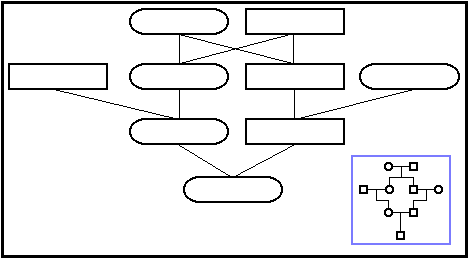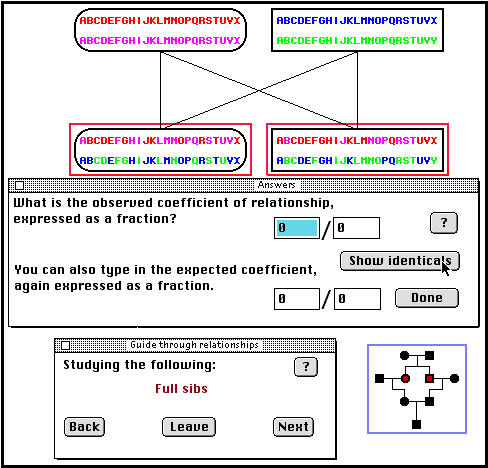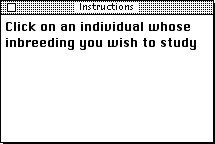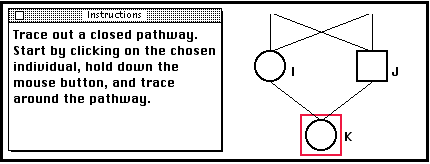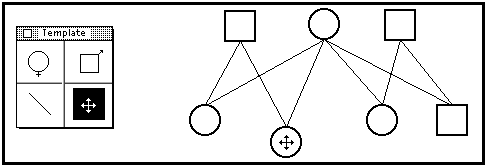 GeneShare
GeneShare 
The GeneShare program lets students make up and study pedigrees. The simplest use of the program is in studying genetic relationships between closely related individuals. More complex uses include designing pedigrees and calculating inbreeding and relationship coefficients.
The image below shows a standard pedigree used in the program, first cousin mating. The inset figure shows the conventional representation of the pedigree. The student will make up the pedigree by adding gene symbols. This is a Monte-Carlo simulation, with chance segregation and crossingover built in.
The student clicks on the founding individuals, those without parents shown, and the genotyes are automatically added. This simulation shows a single chromosome with 32 'units'.
The genotypes of the offspring are now introduced. Clicking on the parents produces a gamete, and this is dragged to the offspring. In the diagram below, the maternal gamete has been added, and the paternal gamete is on the way:
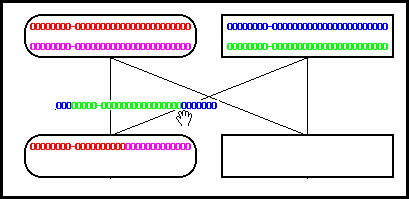
Once the whole pedigree has been filled in, genetic relationships can be studied. The next diagram shows part of a pedigree with 23 chromosome units. The student is studying the relationship between full sibs (sister and brother):
This question is more easily studied if just the identical units are shown:

Now the questions can be answered:
The images shown so far have been from the Simulation mode of the program. The program has a second mode, Calculation mode. This allows students to calculate the expected value of coefficients, typically in complex pedigrees.
The diagram below shows a 6-generation sib-mating pedigree. The buttons on the left show the available options, from which the student is opting to study inbreeding.
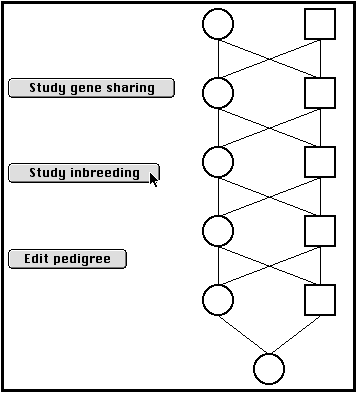
Any individual in the pedigree can be studied:
This student has nominated to study the last. individual in the pedigree ( a difficult exercise):
The student begins to trace out pathways to common ancestors. As pathways are traced out, the program keeps a list, showing the common ancestor. One of the more bizarre pathways has just been traced out:
Once all the pathways have been traced out, the program will check on the calculated inbreeding coefficient.
Lastly, the program allows new pedigrees to be made up, or stored pedigrees to be edited. The diagram shows a pedigree being edited:
